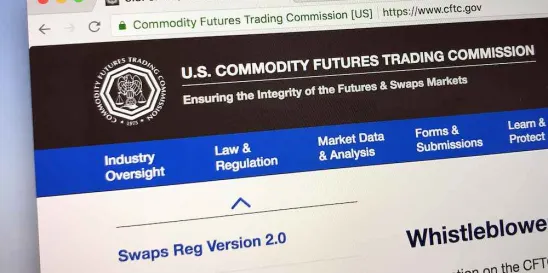This post is the next installment in a multi-part series on CFTC Regulation §1.44, as proposed by the U.S. Commodity Futures Trading Commission (the “CFTC”) on February 20, 2024 (the “Proposed Rule”).
The previous installment discussed the Proposed Rule’s Margin Adequacy Requirement, the keystone of the Proposed Rule from a policy perspective.
In short, the Margin Adequacy Requirement is a regulatory mechanism that (i) is intended to prevent a customer of any futures commission merchant (an “FCM”) (both clearing and non-clearing FCMs) (ii) from withdrawing funds from that customer’s account that (iii) would render the post-withdrawal value of the account insufficient to meet the customer’s initial margin requirements with respect to all products held in that customer’s account.
This post considers the application of the Margin Adequacy Requirement to separate account customers in the ordinary course of business, which can be described as a “qualified exception” to the Margin Adequacy Requirement.
In sum, an FCM can treat separate accounts of a separate account customer as separate entities for purposes of the Margin Adequacy Requirement, as long as three key conditions are met.
Background: The Proposed Rule Is the Second in the Series and a Codification of a Staff Letter
As explained in earlier parts of this series, the Proposed Rule effectively replaces an April 2023 proposed rule (the “First Proposed Rule”) that was intended to codify administrative relief originally provided by two divisions of the CFTC in CFTC Letter No. 19-17.
This administrative history is significant in considering the Proposed Rule’s treatment of separate accounts in the ordinary course of business, since the conditions applicable to such accounts under the Proposed Rule largely mirror the conditions in the First Proposed Rule and CFTC Letter No. 19-17.
The Treatment of Separate Accounts: Three Key Conditions
Under paragraphs (c) and (d) of CFTC Regulation §1.44, an FCM may treat the separate accounts of separate account customer as accounts of separate entities for purposes of the Margin Adequacy Requirements, as long as three conditions are satisfied.
First, the FCM must make an election in respect of such treatment that satisfies the following two requirements of Paragraph (d) of Regulation §1.44:
- The electing FCM must identify each separate account and separate account customer on a list of such accounts and customers that it keeps current and maintains on its books and records; and
- Within one business day of adding its first customer to that list, provide notice of that election to CFTC and the FCM’s designated self-regulatory organization (“DSRO”), in accordance with the notification process specified in CFTC Regulation §1.12(n)(3). It is worth noting that the FCM only has to provide notice of its initial election in respect of its first separate account customer; a subsequent notice is not required to add subsequent customers to the list.
Second, the electing FCM must maintain written internal controls and procedures designed to ensure compliance with the requirements of the Proposed Rule. Concerning this requirement, the CFTC specifically said,
The Commission [i.e., CFTC] preliminarily believes that permitting FCMs to treat the separate accounts of separate account customers as accounts of separate entities for purposes of proposed regulation § 1.44(b), subject to the risk-mitigating conditions set forth further in proposed regulation § 1.44, accomplishes the [Commodity Exchange Act’s] purpose of promoting responsible innovation, while also maintaining continuity of robust customer fund protection and risk mitigation. [Footnotes omitted]
Third, such an election is only permissible in the “ordinary course of business,” which means the standard day-to-day operation of the FCM’s business relationship with its separate account customer.
The next post in this series will consider events that are inconsistent with the ordinary course of business in the separate account context, since the identification of such inconsistent events constitutes the primary risk-mitigating condition in the Proposed Rule.



 />i
/>i

